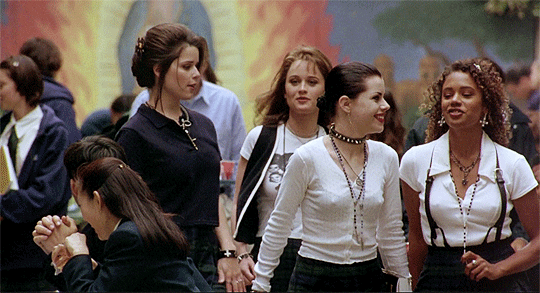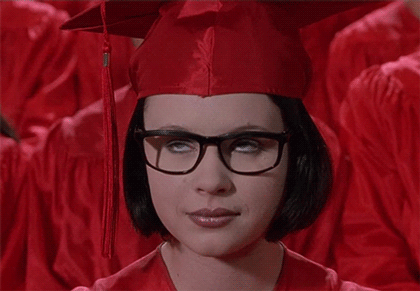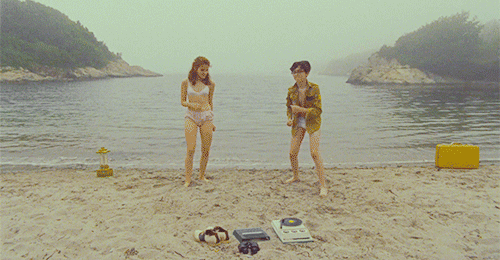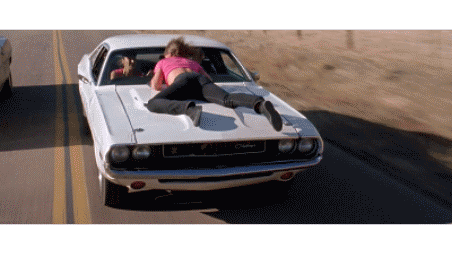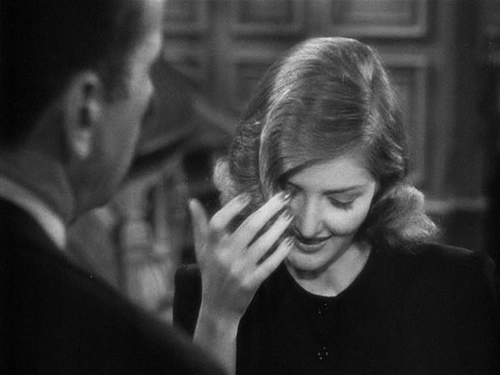GIFs: The Attainable Text
Skip other details (including permanent urls, DOI, citation information)
: This work is licensed under a Creative Commons Attribution 3.0 License. Please contact [email protected] to use this work in a way not covered by the license.
For more information, read Michigan Publishing's access and usage policy.
Raymond Bellour, whose close readings of classical Hollywood films like The Big Sleep (1946), North by Northwest (1959), and Gigi (1958) schooled several generations in moving image analysis, described the film text as unattainable.[1] “The unattainable text” pointed to a key difference between literature and cinema when it comes to critical analysis. A literary critic might quote from a poem or novel; criticism and literature are both expressed in printed language. Bellour was writing at a time before home video, before it was commonplace for casual viewers to possess copies of favorite movies, before it was possible to view clips of movies at will on YouTube, and before you could take screenshots and drop them into a PowerPoint. An academic critic like Bellour might have gained access to a flatbed viewer to analyze a film print in the old days, but to casual viewers and fans the only way to see a film again would be to return to the cinema or catch it on TV. Much influential criticism and history was written on the basis of often fuzzy memories.
In the past, film critics could at best reproduce a still frame of a film, missing the temporal and sensory qualities of spectatorship. With video and particularly online video, it’s possible to quote much more readily, though in print publication this still presents a challenge. But perhaps the greatest boon to film analysis to come from digital technology appears in the unlikely form of the graphical interchange format file, or animated GIF. GIFs originally surfaced as crude animations in 1990s web sites, often as “under construction” warnings. GIFs captured from video are one option for interpolating a brief portion of a film (or television show or other moving image) within the flow of a written text of criticism. While reading a text, when you come to a video, you have to stop reading to play, often waiting for the file to load and buffer, and accommodating sound. But a GIF plays continuously and silently within a web page. GIFs are among the most ideal formats for illustration in film criticism, allowing for a new kind of quotation of the moving image.
The GIF is unsuited to conventional criticism in some ways. You can’t put one in a printed journal or book. It’s a format that lives best on the open web, and its most important users so far have been communities of fans who make and circulate them within a participatory culture, particularly on the blogging platform Tumblr. GIFs have been taken up by BuzzFeed and other commercial sites for news and diversion, but this is an appropriation of grassroots media appreciation. GIFs captured from movies and television function as vernacular criticism, capturing and recycling favorite moments that audiences love or worship, or that express a particular feeling or experience. Like memes and other online expressions of community through media appropriation and circulation, GIFs are examples of vernacular creativity among groups of users with shared interests and reference points.[2] These online social worlds are not usually academic, but they are not so different from scholarly communities either. Like film and television scholars, online fans are also dedicated to the analysis, critique, and appreciation of media.
These GIFs from The Craft (1996) and Ghost World (2001) are distillations of pure affect: a confidently striding posse, an eye-rolling outsider. Description in language is nothing next to these animations, and the GIF is so great at this kind of expression, as it repeats infinitely an eternal feeling. GIFs are also silent and brief, like the earliest examples of cinema, and they capture some of the same magic of life in motion as impressed the earliest film audiences.
We know what will happen to Celine and Jules in the Before movies, but in this animation captured from Before Sunrise (1995) we can contemplate not just the moment but the unfolding of their courtship expressed in their glances, the blur of the background trains, and the shimmering agitation of the liquid in the glasses. These animations remind us of the inadequacy of still frames to the task of illustrating moving images. They have the power to make visible and permanent the evanescence of cinephile moments.
They also illustrate movement. A GIF can quote a dance, a stunt, a gesture and glance at least 1000 times better than a still:
These moments are plucked out of the fabric of the film, revealing the unique quality of a performance, a body, a face. The epitome of a style, the essence of a character, the allure of the film, its erotic charge, are all there for your contemplation, over and over:
But even putting aside their special brand of motion picture razzle dazzle, GIFs allow us to publish criticism of the moving image using the technology of the moving image, and in a way that is complementary with written language. Amateurs have been using them already for years, as have writers whose work is native to the web. Academic film criticism needs GIFs too.
One more thing that makes GIFs great: they are so easily shared. They are part of a growing cultural commons of image files to use for diverse purposes: in conversation, in expressions of fandom, or in criticism. GIFs can join professional and academic critics with a wider culture of media appropriation and appreciation. They have the potential to be nodes of contact for networks of similar interests in and out of academia. As Jason Eppink writes, “GIFs are promiscuous and frictionless, with low barriers for viewing, possessing, and sharing. It is largely because of its limitations that the GIF thrives nearly two decades after its introduction, sustaining a renewed interest in the loop.”[3]
Author biography:
Michael Z. Newman is an Associate Professor in the Department of Journalism, Advertising, and Media Studies at the University of Wisconsin-Milwaukee. He is the author of Indie: An American Film Culture and Video Revolutions: On the History of a Medium, and the co-author of Legitimating Television: Media Convergence and Cultural Status. He is @mznewman on Twitter.


